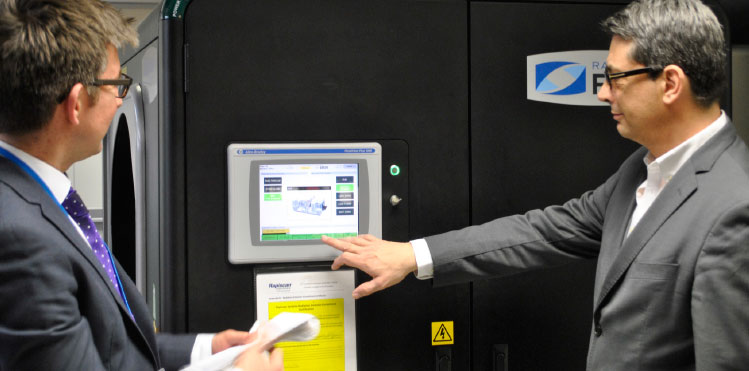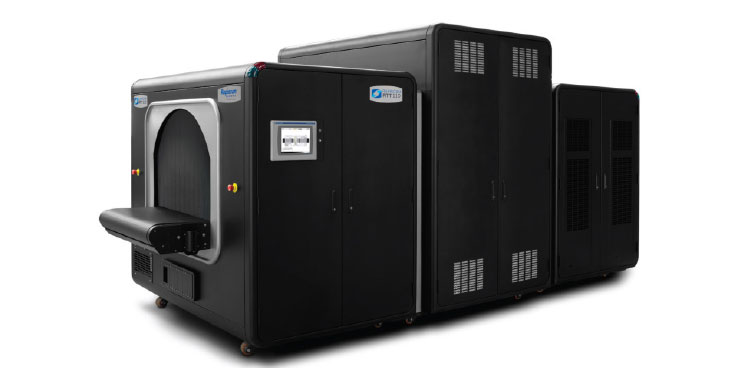
Frederic Brouiller, Vice President Sales Aviation, Rapiscan Systems, showcased the RTT110 and explained its capabilities to Airport Business’ Ross Falconer.
The development of Real Time Tomography has been heralded as a breakthrough technical innovation in aviation baggage screening – one that is particularly important in light of the EU’s new Standard 3. Airport Business’ Ross Falconer visited Rapiscan, where Frederic Brouiller, Vice President Sales Aviation, Rapiscan Systems, explained more about the technology.
Achieving the highest possible levels of security is, of course, airports’ ultimate goal. A significant change occurred in September 2014; after that date, all equipment newly installed by Europe’s airports must adhere to the EU’s new Standard 3 – the highest standard set by the EU for the detection of explosive threats in hold baggage.
Real Time Tomography (RTT) is a new type of Computed Tomography (CT) scanner that has been described as a breakthrough technical innovation in aviation baggage screening. Rapiscan has been quick to react to the new regulatory requirements. Its RTT110 has been designed to satisfy EU Standard 3, and Frederic Brouiller, Vice President Sales Aviation, Rapiscan Systems, stated that the key innovation is the stationary gantry design. “This allows it to provide detailed 3D images at speeds of up to 1,800 bags per hour (theoretical), compared with 400 to 900 bags per hour with legacy CT systems. It has a full belt speed of 0.5m per second for ease of integration with high-speed inline baggage handling systems,” he said.
Speaking to Airport Business at Rapiscan’s facility in Salfords, UK, where the RTT110 is developed and manufactured, Brouiller explained in more technical detail how the technology works. He added that the stationary gantry “incorporates a very large number of micro X-ray emitters that capture tens of thousands of views of a typical bag, generating images with significantly better resolution at much greater speed” than a typical moving gantry used in CT baggage screening systems.

The key innovation in the RTT110 is the stationary gantry design, which allows it to provide detailed 3D images at speeds of up to 1,800 bags per hour.
While detecting an increased range of explosive threats and prohibited items, including liquid explosives, the RTT technology is said to do so at a lower overall cost of ownership. “There are fewer moving parts than traditional CT systems, thereby lowering operational, service and maintenance costs,” Brouiller explained.
The development process for a technology such as the RTT110 is, of course, a lengthy one, and Rapiscan involves airports from the very beginning, ascertaining their requirements and taking their opinions into consideration – all with the aim of satisfying regulatory requirements. Airports are also invited to participate in trials of new equipment – Manchester and Paris-CDG airports were among those to trial the RTT110. “Our message to airports is that we’re here to optimise solutions,” Brouiller commented. “Airports know their targets best and our first discussion is always with them. We can propose long-term solutions, which airports should consider as an investment.”
While EU Standard 3 is a regulatory requirement, it does provide an opportunity for airports to achieve even greater efficiency and performance, and an RTT system can deliver just that, enabling them to meet three key criteria – high speed, efficiency, and cost-effectiveness. Most importantly, it helps airports improve passenger safety while expediting and improving baggage handling.







